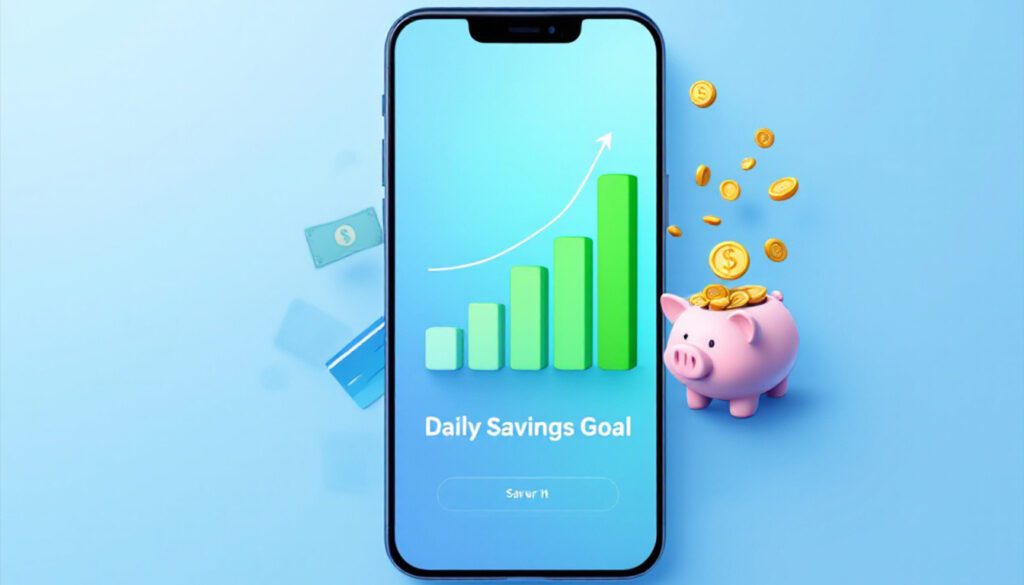Introduction
Running a successful business isn’t just about earning more—it’s about spending smarter. Imagine trying to fill a bucket with holes. No matter how much effort you put into pouring water, it’s never enough. The same happens when businesses fail to manage their finances wisely. But here’s the good news: you can plug those financial leaks with the right strategies.

In this guide, we’ll explore 7 transformative hacks to help your business Ultimate Guide to Saving money without compromising quality. Whether you’re a startup owner or a seasoned entrepreneur, these actionable tips will empower you to optimize resources, cut unnecessary costs, and maximize profits.
1. Audit Your Expenses Regularly
Benefits of a Financial Audit
If you don’t know where your money is going, it’s impossible to control your spending. Conducting regular expense audits allows you to identify areas of waste and opportunities for improvement.
“You can’t improve what you don’t measure.” By understanding your financial flow, you can plug the leaks and redirect funds to critical growth areas.
Tools and Techniques for Expense Tracking
- Expense Categories: Divide costs into categories like marketing, utilities, salaries, and subscriptions.
- Software: Use tools like QuickBooks or Wave to automate tracking.
- Spending Trends: Analyze historical data to spot spending spikes or patterns.
| Tool | Price (per month) | Key Features |
|---|---|---|
| QuickBooks | $25–$150 | Expense tracking, reports |
| Wave | Free | Invoicing, receipt scanning |
2. Leverage Technology to Save Money
Automation of Business Processes
Technology can save you thousands of dollars by automating repetitive tasks. For instance:
- Automate invoicing and billing using platforms like FreshBooks.
- Use chatbots for customer service instead of hiring full-time agents.
Free and Affordable Tech Tools
- Google Workspace: Ideal for team collaboration.
- Asana or Trello: Great for project management.
- Canva: Affordable graphic design solutions.
Switching to cloud-based tools eliminates the need for expensive hardware or software installations, slashing IT costs significantly.
3. Negotiate Better Deals with Vendors
Importance of Vendor Relationships
Strong vendor relationships can lead to exclusive discounts, priority service, and better payment terms. Developing trust pays off, especially during negotiations.
“A good relationship with vendors isn’t just about price—it’s about long-term value.”
Negotiation Tips
- Research Market Rates: Know the industry standard to have leverage.
- Offer Volume Commitments: Promise bulk orders for discounts.
- Be Flexible: Consider non-monetary perks like longer delivery timelines.
4. Go Green to Cut Costs
Energy-Efficient Practices
Adopting eco-friendly measures can lead to significant savings. Here’s how:
- Replace traditional bulbs with LED lighting.
- Install smart thermostats to reduce energy bills by up to 20%.

Reducing Paper Usage
Switch to digital solutions like e-signatures and cloud storage. It’s cost-effective and environmentally friendly.
| Initiative | Cost Savings | Additional Benefits |
|---|---|---|
| LED Lighting | $200/year/office | Lower maintenance costs |
| Paperless Workflow | $300/year/office | Improved efficiency |
Benefits of Sustainability
Not only does going green cut costs, but it also boosts your brand’s image. Customers increasingly prefer businesses that prioritize sustainabilit
5. Embrace Remote Work Options
Savings on Office Space
Allowing employees to work remotely can save you a fortune in office rent, utilities, and maintenance costs.
- A remote workforce reduces office-related expenses by up to 40% annually.
- Consider hybrid models to combine flexibility with occasional in-person meetings.
Tools for Remote Work
Use tools like Zoom for communication and Slack for team collaboration. Project management software like Monday.com ensures productivity doesn’t drop.
Benefits Beyond Savings
Remote work doesn’t just save money—it boosts employee satisfaction, retention, and productivity. Happy employees are productive employees!
6. Invest in Employee Training
Preventing Costly Mistakes
Untrained employees are more likely to make errors, which can lead to significant financial losses. Proper training equips them to perform better, minimizing risks.
“Think of training as an investment, not an expense.”
Free or Low-Cost Training Resources
- Webinars: Platforms like LinkedIn Learning offer affordable solutions.
- Online Tutorials: Free content on YouTube or Coursera.
- Internal Mentorship Programs: Pairing junior staff with senior members.
| Training Resource | Cost | Features |
|---|---|---|
| LinkedIn Learning | $29.99/month | Business skills courses |
| Coursera | Free–$399/course | Certification options |
7. Monitor and Minimize Debt
Identifying High-Interest Debt
High-interest loans can cripple your cash flow. Identify and target these first. Use strategies like the debt snowball method to pay off smaller debts, creating momentum to tackle larger ones.
Refinancing and Consolidation Options
Consider renegotiating loans to secure lower interest rates or consolidate multiple debts into one manageable payment.
- Refinancing can save up to 15% on interest annually.
- Look for flexible terms to accommodate your business’s cash flow.
Bonus Tips for Long-Term Savings
- Build an Emergency Fund: Helps cover unexpected expenses without resorting to high-interest loans.
- Regularly Revisit Savings Plans: The market changes—your strategies should, too.
- Reward Loyalty: Offer incentives to repeat customers instead of spending heavily on acquiring new ones.
Common Mistakes to Avoid
- Overlooking Hidden Fees: Always read the fine print on contracts.
- Cutting Costs Too Aggressively: Don’t compromise on quality or customer satisfaction to save pennies.
- Neglecting Employee Well-being: Happy employees are more productive. Cost-cutting shouldn’t lead to burnout or dissatisfaction.

Measuring the Impact of Your Savings Strategy
Key Metrics to Track
- Profit Margins: Are your savings translating into higher profits?
- Cash Flow: Monitor liquidity to ensure smooth operations.
- Operational Efficiency: Track whether changes are improving productivity.
Tools for Financial Analysis
- Google Analytics: Measure online marketing ROI.
- Zoho Books: A comprehensive tool for analyzing financial health.
Ultimate Guide to Saving: Answering Your Top FAQs
Managing personal finances can often feel overwhelming, but simple strategies and clear guidance can make a huge difference. If you’re searching for actionable advice and practical insights, you’re in the right place. In this ultimate guide to saving, we’ll address your most pressing questions about savings rules and strategies to help you meet your financial goals.
What is the 50/30/20 Rule for Savings?
The 50/30/20 rule is a widely recommended budgeting framework that simplifies financial planning. Here’s how it works:
- 50% for Needs: Allocate half of your income to essentials such as rent, utilities, groceries, and transportation.
- 30% for Wants: Set aside 30% for discretionary spending like dining out, entertainment, and hobbies.
- 20% for Savings: Direct the remaining 20% towards financial goals such as building an emergency fund, investing, or paying off debt.
This rule is especially helpful for individuals new to budgeting as it provides clear spending boundaries while allowing some flexibility.
What is the 60/20/20 Rule for Savings?
The 60/20/20 rule is a variation of the 50/30/20 model but emphasizes saving more aggressively. Here’s the breakdown:
- 60% for Needs: Cover your basic living expenses with 60% of your income.
- 20% for Wants: Enjoy non-essential spending within a 20% limit.
- 20% for Savings: Dedicate 20% to savings and investments.
This rule works well for individuals or families with higher fixed costs or those aiming to save a significant portion of their income.
What is the 30-Day Rule?
The 30-day rule is a simple but powerful technique for curbing impulsive spending. Whenever you’re tempted to make a non-essential purchase, follow these steps:
- Pause and delay the purchase for 30 days.
- Reflect on whether the item is a need or a want.
- If, after 30 days, you still feel it’s worth the expense, you can proceed with confidence.
This strategy not only saves money but also promotes mindful spending habits.
How to Save $1000 ASAP?
Saving $1000 quickly might seem daunting, but it’s achievable with these practical steps:
- Cut Unnecessary Expenses: Identify and eliminate non-essential costs such as subscription services or dining out.
- Sell Unused Items: Declutter your home and sell items you no longer need on platforms like eBay or Facebook Marketplace.
- Pick Up a Side Hustle: Consider freelancing, pet sitting, or gig economy jobs to generate extra income.
- Set Daily Savings Goals: Break it down; aim to save $33 per day for 30 days.
- Automate Savings: Use apps or bank features to transfer a fixed amount daily or weekly into a dedicated savings account.
What is the 75% Saving Rule?
The 75% saving rule is an extreme savings strategy often used by those pursuing financial independence. It involves saving or investing 75% of your income and living on the remaining 25%.
While challenging, this rule is achievable by:
- Drastically reducing living expenses.
- Downsizing your home or car.
- Increasing your income streams.
This approach is ideal for those with high earning potential and minimal financial obligations.
Is Saving 20% Realistic?
Saving 20% of your income is a realistic goal for many people, but it depends on your financial situation. Here are some tips to make it achievable:
- Start Small: If 20% feels overwhelming, begin with 5-10% and gradually increase.
- Track Expenses: Use budgeting apps to identify areas where you can cut back.
- Automate Savings: Set up automatic transfers to your savings account.
- Increase Income: Consider part-time work or freelance gigs to boost your earnings.
Remember, consistency is key—saving even a small amount regularly adds up over time.
What is the 5/24 Rule in Banking?
The 5/24 rule is a guideline used by Chase Bank to limit new credit card accounts. It means:
- If you’ve opened 5 or more credit cards (from any bank) within the past 24 months, you’re unlikely to be approved for a new Chase credit card.
This rule helps prevent overextending credit and encourages responsible financial management. If you’re planning to apply for a Chase card, check your credit card activity to ensure compliance with this rule.
What is the 24/48 Rule?
The 24/48 rule is a financial strategy aimed at preventing impulsive purchases. It involves:
- Waiting 24 hours before buying anything under a certain threshold (e.g., $100).
- Waiting 48 hours for higher-cost items.
This delay allows you to reassess whether the purchase aligns with your financial goals, reducing regretful spending.
How to Save $500 in 30 Days?
Saving $500 in a month is achievable with disciplined actions. Follow these steps:
- Create a Budget: Identify your income and expenses, and allocate funds specifically for savings.
- Reduce Variable Costs: Cut back on non-essentials like coffee runs, dining out, or streaming services.
- Earn Extra Income: Take on short-term gigs, such as babysitting, dog walking, or freelance work.
- Use Cash-Back Apps: Earn rewards on everyday purchases using apps like Rakuten or Honey.
- Set a Daily Savings Target: Aim to save approximately $17 per day by adjusting your spending habits.
Conclusion
Saving smartly is about more than just cutting costs—it’s about making intentional choices that support long-term growth. From automating processes to negotiating better deals and investing in your team, these hacks will not only save your business money but also boost its resilience in a competitive market.
Remember, every dollar saved is a dollar that can be reinvested into your business. So, start implementing these strategies today and watch your bottom line improve over time.
1 thought on “The Ultimate Guide to Saving: 7 Hacks for Your Business Success”